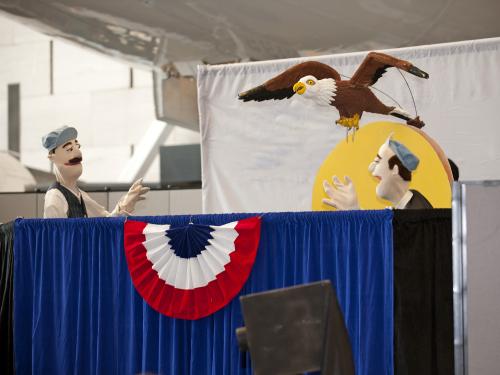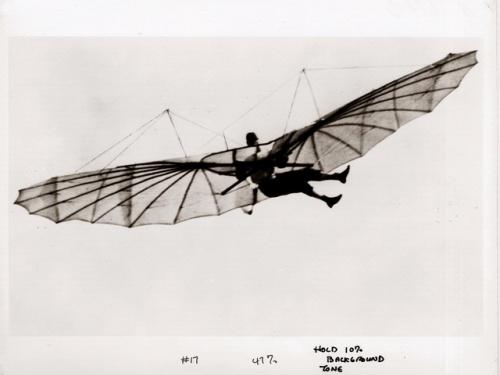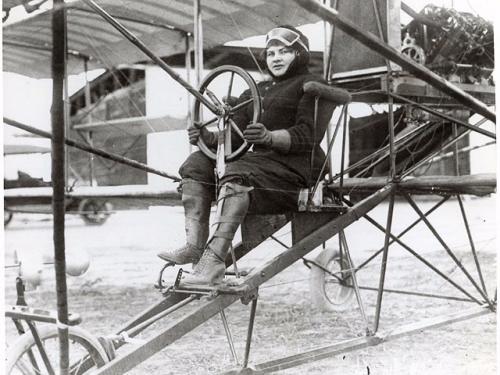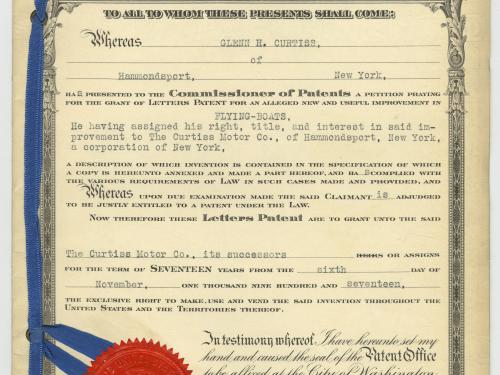

Stories of daring, stories of technological feats, stories of prevailing against the odds ... these are the stories we tell at the National Air and Space Museum. Dive in to the stories below to discover, learn, and be inspired.
Showing 81 - 90 of 95

February 21, 2013
In a recent post, Tom Paone described the plans of William Powell, a resident of Mobile, Alabama, for a Confederate helicopter. In fact, Powell’s scheme was only the tip of the iceberg. In researching a scholarly paper on Civil War Planes, I have catalogued a score of plans for powered flying machines developed on both sides of the battle lines. Perhaps the most interesting of these was the work of Colonel Edward Wellman Serrell , a professional engineer serving with the Union Army of the James in 1864. Inspired by the well-known hand-held helicopter toy, Serrell had begun studying aeronautics several years before the War.

January 23, 2013
As my colleague Dr. Tom Crouch referenced in a previous post, our nation is currently in the midst of commemorating the 150th Anniversary of the American Civil War (or sesquicentennial for you Latin fans).

April 24, 2012
In the years before the invention of the flight data recorder, the "black box" that records essential flight data, an aircraft accident investigation could occasionally degenerate into a mere finger-pointing exercise, like this one from Russia during World War I — a group of aviation cadets at the Gatchina Military Flying School near Petrograd (now St. Petersburg) point fingers of scorn at a student pilot identified only as "Ivanov" after his less than perfect landing, fortunately injuring only his dignity.

January 25, 2012
At the National Air and Space Museum, we tell stories in a number of ways — through objects, artwork, lectures, videos, planetarium shows — even puppets. Storytelling through puppetry can be a powerful educational tool for our youngest audiences in particular.

December 17, 2011
Airplane designers will tell you that the wing is the heart of an airplane. For conventional airplanes, it provides most of the lift generated by the airplane; the fuselage and tail contribute only a few percent of the overall lift of the airplane.

October 23, 2011
Blogs across the Smithsonian will give an inside look at the Institution’s archival collections and practices during a month long blogathon in celebration of October’s American Archives Month. See additional posts from our other participating blogs, as well as related events and resources, on the Smithsonian’s Archives Month website .

April 19, 2011
Things such as the Hope Diamond, the Star Spangled Banner, the Lansdowne portrait of George Washington, and Charles Lindbergh’s Spirit of St. Louis airplane are good examples—one-of-a-kind items, familiar to all, and widely known to reside at the Smithsonian. Also in this subset of signature objects is one of the most significant in the entire Smithsonian collection—the Wright Flyer, the world’s first airplane.

January 18, 2011
In 1909, military aviation began with the purchase of the Wright Military Flyer by the U.S. Army. The Navy sprouted wings two years later in 1911 with a number of significant firsts.

December 10, 2010
In 1929, the Curtiss Aeroplane and Motor Company merged with the Wright Aeronautical Corporation to form the Curtiss-Wright Corporation. The merger of these two companies created one of the largest aircraft manufacturers in the country, which held numerous patents for aircraft.

October 21, 2009
The afternoon of October 15, 2009 was one of those rare moments when Americans from coast-to-coast were riveted to their television sets by a news story unfolding in real time. Six year old Falcon Heene was reported to be trapped aboard a helium balloon floating across the Colorado landscape at 7000 feet. The image on the screen was surreal, a strange craft looking like a cross between a Mylar grocery store balloon and a flying saucer, with a small circular structure on the bottom that appeared to be just large enough to house a small child. When the balloon came naturally to earth after a fifty mile flight, however, the boy was not aboard.